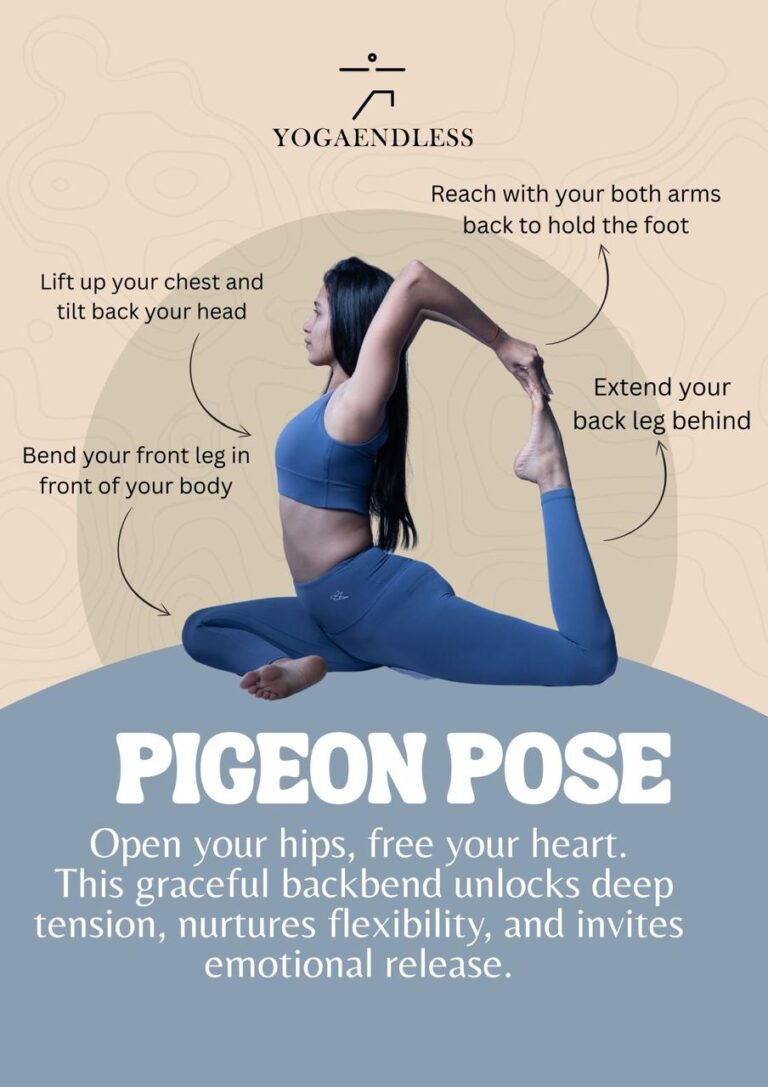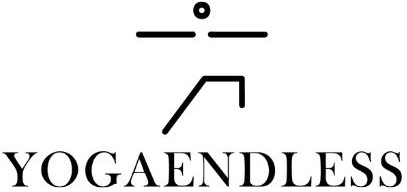Kapotasana (Pigeon Pose): Unlock the Hips, Release the Heart

Kapotasana, commonly referred to as Pigeon Pose, is a deeply therapeutic posture that targets the hips and thighs — two areas where we often store emotional tension. This beautiful asana encourages surrender, grounding, and openness, both physically and emotionally.
Whether you’re spending long hours sitting at a desk or working on flexibility for your yoga practice, Pigeon Pose offers powerful release and rejuvenation.
What Is Kapotasana (Pigeon Pose)?
In Sanskrit:
- Kapota = Pigeon or Dove
- Asana = Pose
Pigeon Pose is a deep hip-opening posture where one leg is bent in front of the body and the other extended back. While the chest lifts and the spine lengthens, the pose invites a deep stretch into the hip flexors, glutes, and groin.
There are variations of this pose — from One-Legged Pigeon Pose (more common) to the Full Pigeon Pose, which is a deep backbend practised by advanced yogis.
Other Names for This Pose
- Pigeon Pose
- One-Legged King Pigeon Pose (Eka Pada Rajakapotasana — advanced variation)
- Sleeping Pigeon (resting forward version)
- Front-Fold Pigeon (for deeper hip release)
How to Do Pigeon Pose (Step-by-Step Instructions)
- Begin in Downward Facing Dog (Adho Mukha Svanasana)
- Hands and feet rooted
- Hips lifted, spine long
- Hands and feet rooted
- Lift your right leg up and sweep it forward
- Bring the right knee toward the right wrist
- Place the shin on the mat with the foot angled toward the left hip
- Bring the right knee toward the right wrist
- Extend the left leg straight behind you
- The top of the left foot rests on the mat
- Hips are square and centred
- The top of the left foot rests on the mat
- Check alignment
- Right hip pulls back, left hip moves forward
- Use a folded blanket under the right hip if it doesn’t touch the mat
- Right hip pulls back, left hip moves forward
- Place your hands on the mat beside your hips
- Lengthen the spine and open the chest
- Stay here for a gentle backbend
- Lengthen the spine and open the chest
- Optional: Fold forward over the front leg
- Lower to your forearms or rest your forehead on stacked hands or a block
- This version is more restorative and introspective
- Lower to your forearms or rest your forehead on stacked hands or a block
- Breathe deeply and stay for 5–10 breaths
- Relax your shoulders and jaw
- Let go of tension in the hips
- Relax your shoulders and jaw
- To release
- Tuck the back toes
- Lift into Downward Dog
- Tuck the back toes
Repeat on the other side
Benefits of Pigeon Pose
- Opens tight hips and hip flexors
- Stretches the thighs, groin, and glutes
- Releases stored emotional tension
- Improves flexibility and mobility in the lower body
- Stimulates internal organs and aids digestion
- Relieves lower back pain when practiced mindfully
- Calms the nervous system in restorative variations
What Not to Do (Precautions & Common Mistakes)
- Don’t force the front knee or ankle. Keep the shin angle comfortable to avoid injury
- Avoid collapsing onto one hip. Use props to stay aligned
- Skip this pose if you have knee or hip injuries without guidance
- Never bounce or push too deep. Ease into the stretch gradually
- Don’t skip warming up. Prep with low lunges or cat-cow
